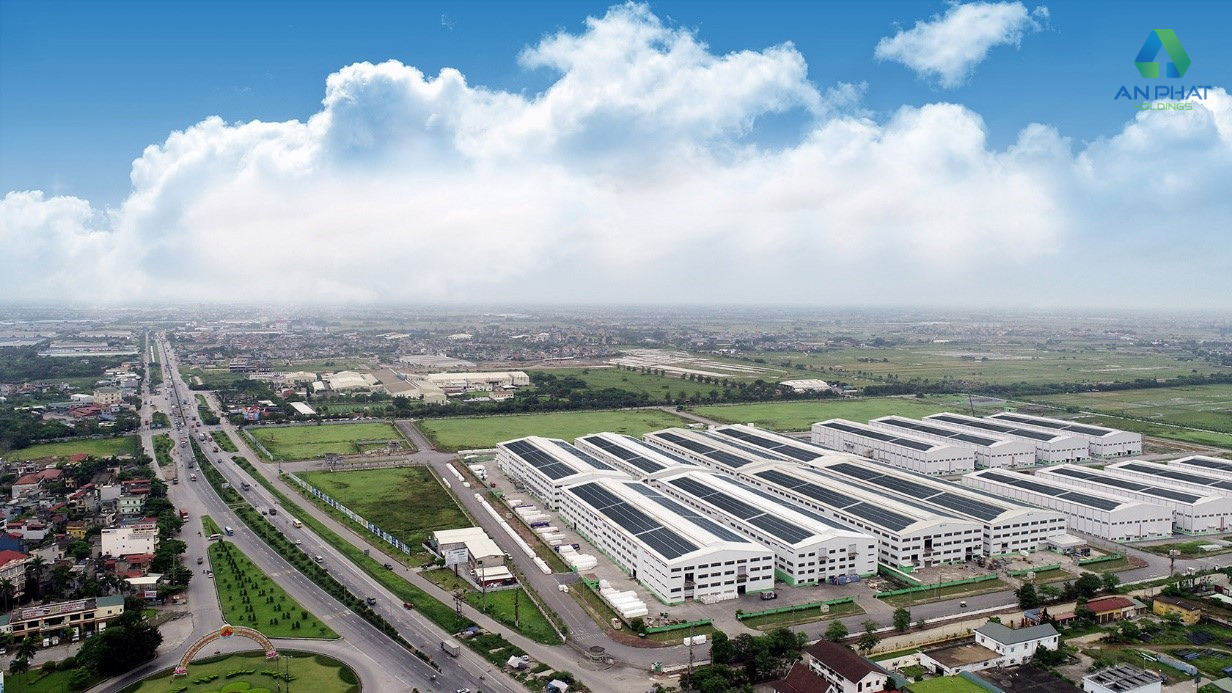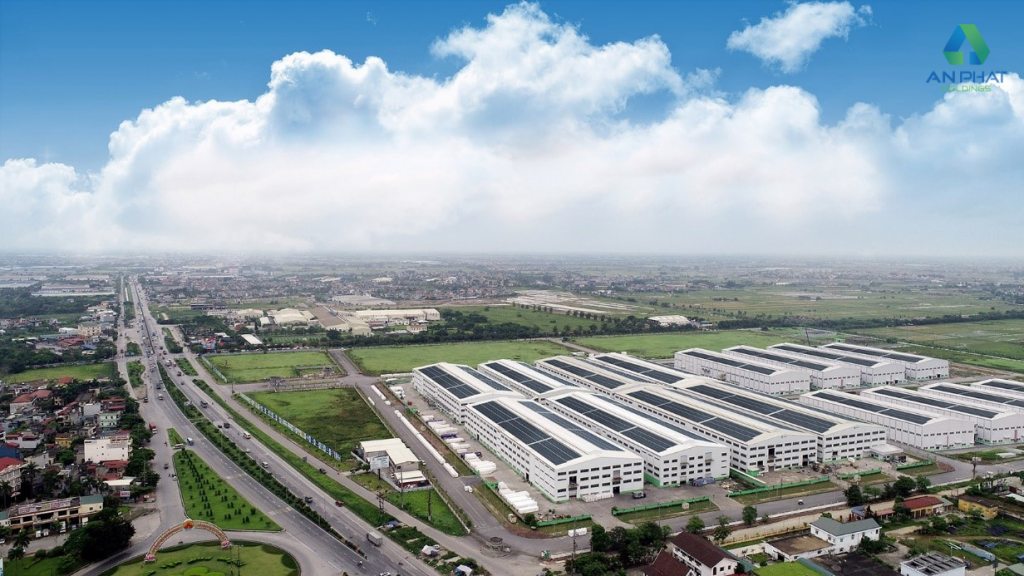With the goal set for 2030, about 40-50% of localities nationwide plan to convert existing industrial parks into eco-industrial parks, and 8-10% of localities aim to develop new eco-industrial parks. The demand for investment capital is substantial.

According to data from the Ministry of Planning and Investment, by the end of 2023, the country had established 416 industrial parks, including four export processing parks, with a total natural land area of approximately 129.9 thousand hectares and a total industrial land area of about 89.2 thousand hectares.
To date, the industrial park system has been established in 61 out of the 63 provinces and cities nationwide, becoming a key area attracting both domestic and international investment projects as well as being a destination for many leading global corporations. In the new development trend, economic organizational models by territory are changing development goals, and Vietnam is no exception. At the same time, aiming for sustainable development, the requirement to build green industrial parks and convert existing ones into eco-industrial parks is becoming an urgent need to adapt to development demands.
An assessment report by the Ministry of Planning and Investment shows that over more than 30 years of industrial park development in Vietnam, the expansion of industrial parks is facing difficulties due to limited resources in labor, land, and natural resources, while labor productivity and resource utilization efficiency are not high, failing to ensure a balance between economic development and environmental and social security. This process is also facing challenges as tax and land incentives are gradually decreasing, and the linkage and industrial production cooperation within industrial and economic parks are limited.
According to the plan, by 2030, the country will have 40-50% of localities planning to convert existing industrial parks into eco-industrial parks and 8-10% of localities planning to build new eco-industrial parks. A survey by the International Investment Research Institute (ISC) shows that the demand for investment capital to fill the remaining areas of Vietnam’s planned industrial parks is estimated to be about 600-650 billion USD; the total capital for developing infrastructure and filling industrial parks is about 650-700 billion USD.
Additionally, the demand for investment capital for technological innovation at enterprises in industrial parks and the restructuring and conversion of 293 existing industrial parks into eco-industrial parks to achieve green growth goals in line with the commitments of the Vietnamese government to the international community is also very large.
According to the Vietnam Industrial Finance Association, the time to implement an industrial park infrastructure investment project can extend over 3 years, even up to 5 years, due to many difficulties and obstacles related to the legal framework, land clearance, especially investments following the new industrial park model, eco-industrial parks.
Although the government issued Decree 35/2022/ND-CP on May 28, 2022, which regulates the management of industrial parks and economic parks, providing clearer definitions of export processing parks, support industrial parks, eco-industrial parks, high-tech industrial parks, etc., the implementation process still faces many challenges. Furthermore, the regulations and development orientations for industrial parks are still scattered across many legal documents and other laws, such as the Land Law, Construction Law, Environmental Protection Law, creating difficulties in implementation.
Sharing about the implementation of a circular economy project in an industrial park, Mr. Chu Duc Tam, Vice Chairman of the Board of Members of SM Tech Vina Engineering Company, mentioned a case where a company operating in production needs a lot of lubricating oil and, after completing the product, also produces a large amount of waste oil. This company found a partner willing to buy back the waste oil because it meets the standards for input materials for their production activities.
However, the two sides could not cooperate with each other due to many regulations. From this reality, Mr. Chu Duc Tam believes that to build green industrial parks, promote the circular economy model, and handle environmental issues within the economic park, besides financial issues, the state needs to have appropriate mechanisms and policies. The essence of the circular economy is a closed production cycle, and the waste of one enterprise can become the input material of another, thereby reducing all negative impacts on the environment, ecosystems, and human health. If new oil is not distinguished from recycled oil and taxed at the same rate, a symbiotic relationship between companies to create a circular economy cannot be achieved.
Dr. Ngo Cong Thanh, Vice Chairman of the Vietnam Industrial Finance Association, believes that the attraction of investment for developing economic parks and industrial parks is showing limitations that need to be addressed. These include planning and development orientations for industrial parks and economic parks lacking a comprehensive and long-term vision, being scattered according to administrative boundaries, lacking industry and regional linkages; the quality and effectiveness of investment attraction have not met development requirements in depth.
In addition, local authorities and domestic industrial park infrastructure developers still prioritize attracting investment to fill up, not really focusing on industry structure, technology, environmental and social factors of the investment project, so the effectiveness of developing industrial parks has not met the set requirements.
On the other hand, due to limited financial capacity, the investor of industrial park infrastructure still has the mentality of waiting to find a secondary investor before investing in shared infrastructure in the industrial park, while foreign investors want to have land and technical infrastructure in place before deciding to invest. This is one of the reasons why many industrial parks have a low fill rate.
To mobilize a large amount of capital for investment in industrial parks and economic parks in the coming time, Dr. Ngo Cong Thanh believes that fundamental changes are needed in unlocking capital flows, creating conditions for investors to easily access production factors and renewing investment promotion activities. In addition, legal issues related to the formation and development of eco-industrial parks, converting existing industrial parks into eco-industrial parks need to be legislated or specifically guided, encouraging investors to participate in the development of industrial park infrastructure.
Dr. Phan Huu Thang, Chairman of the Vietnam Industrial Finance Association, said: Annually, the amount of foreign direct investment (FDI) into industrial parks and economic parks accounts for 60-70% of the FDI capital attracted in the country, and this ratio is still increasing. This shows the very important role of the industrial park in foreign investment cooperation activities in Vietnam and the trend of foreign investment in Vietnam in the future will mainly focus on industrial parks and economic parks.
Source: Nhandan.vn


